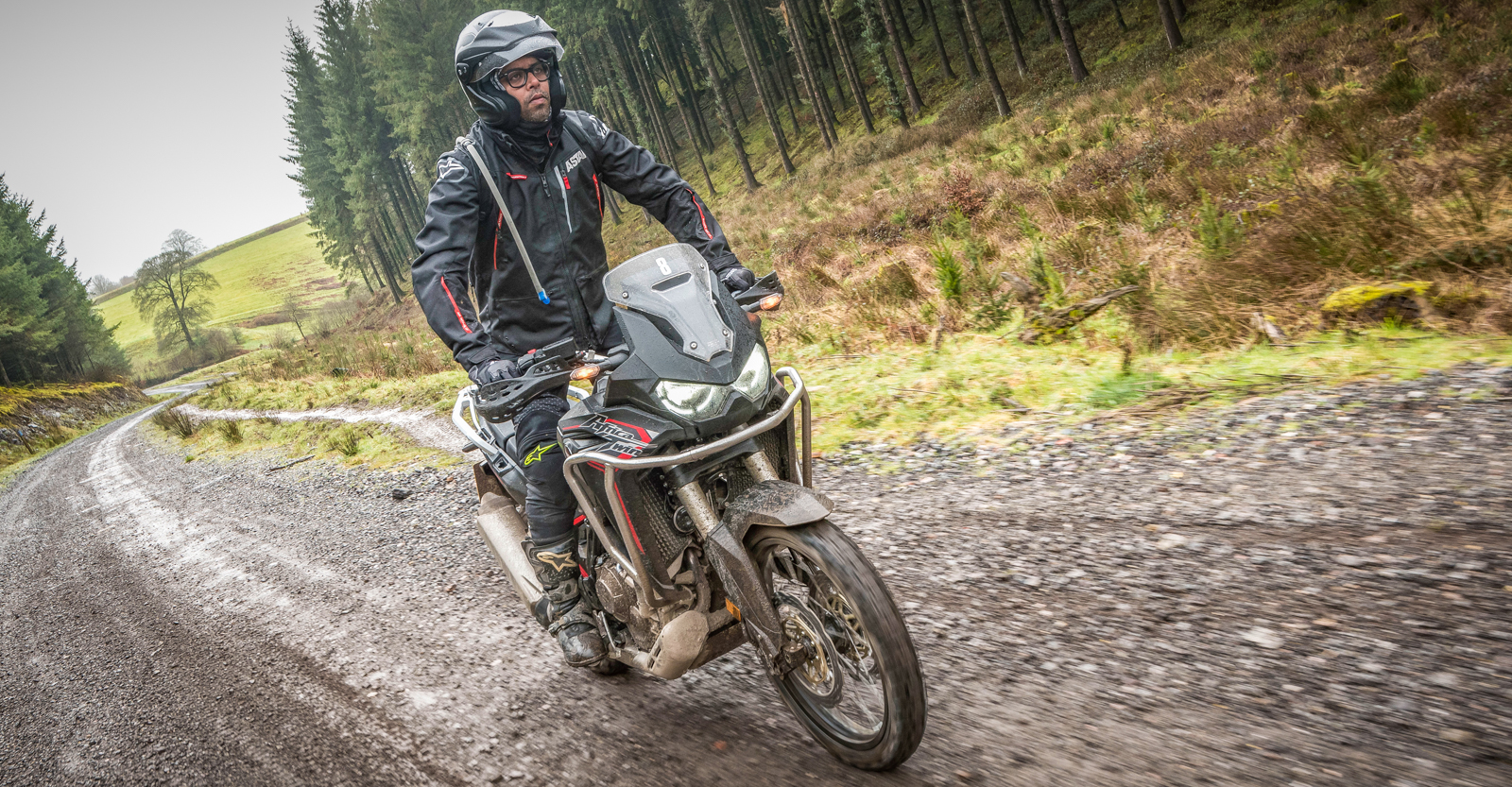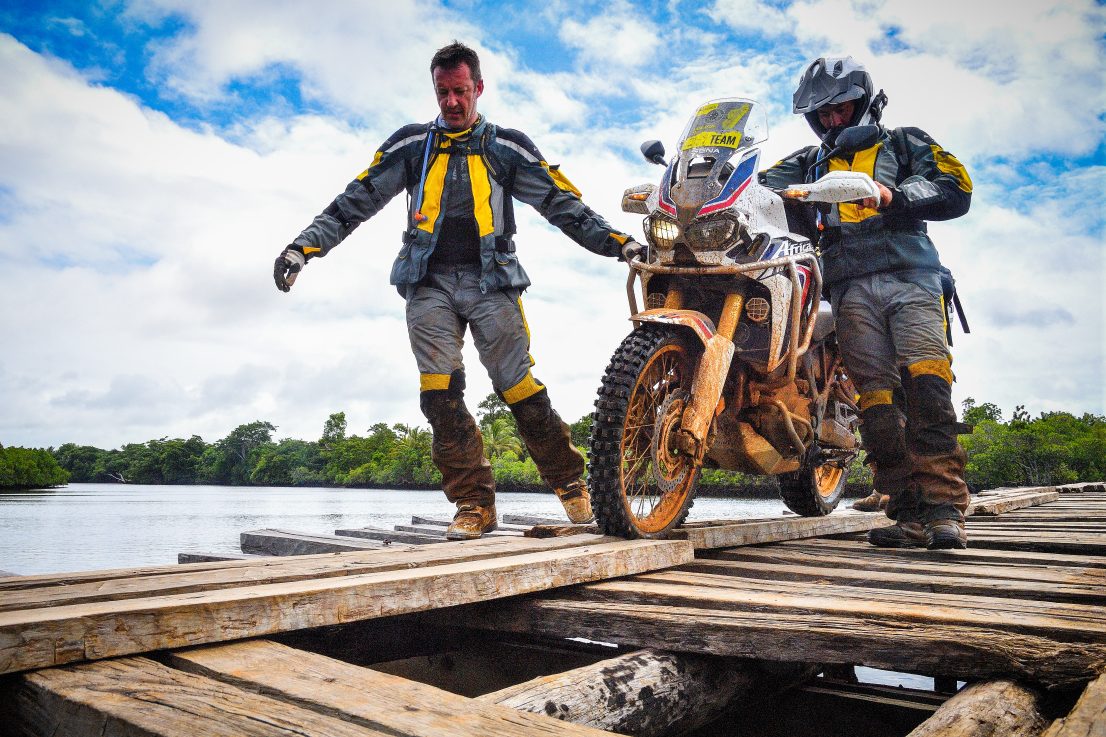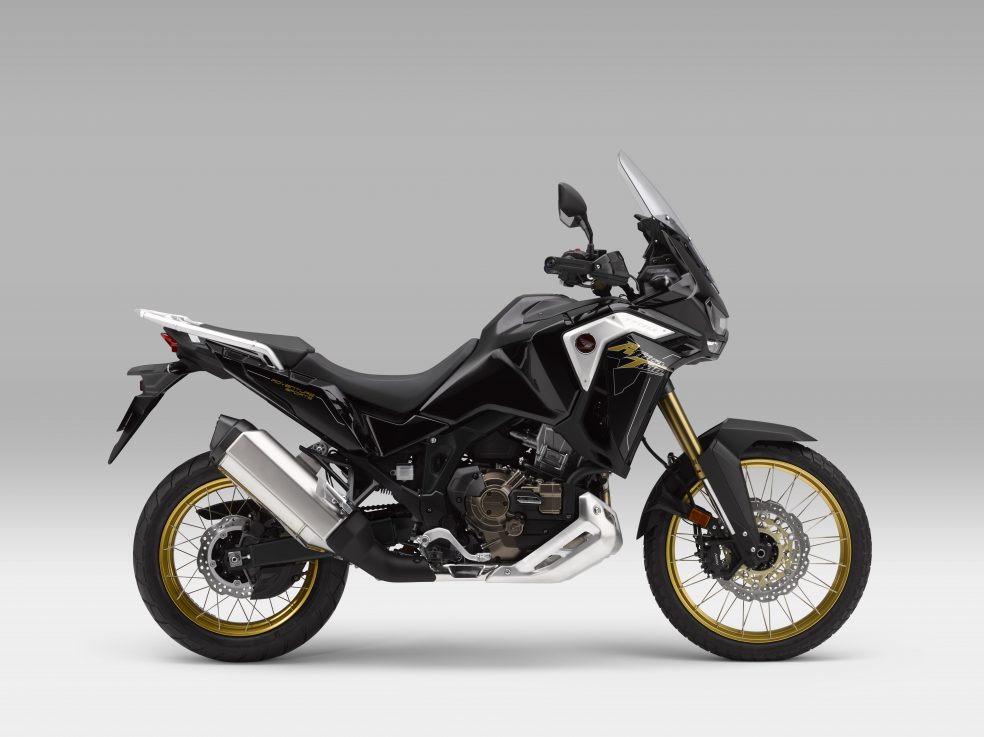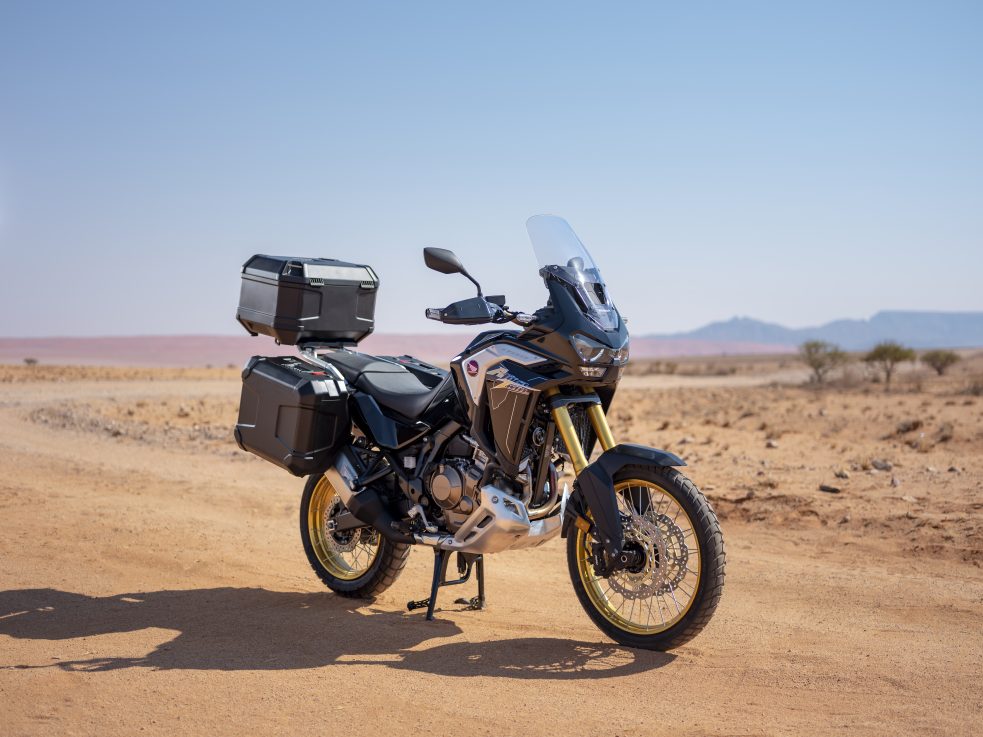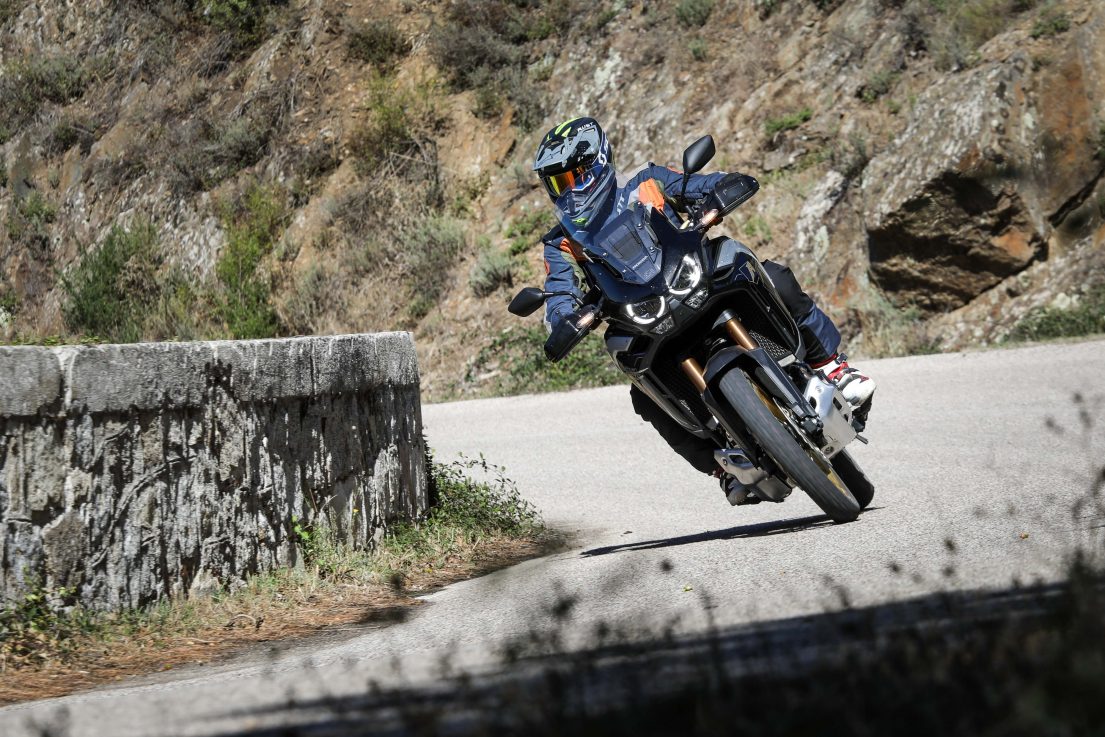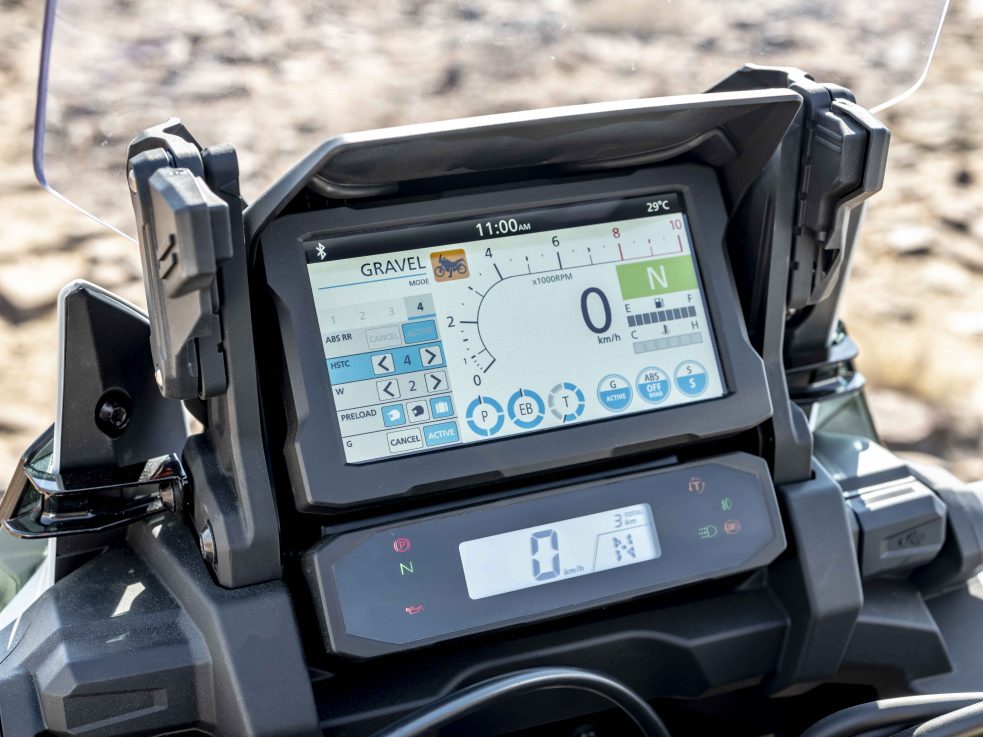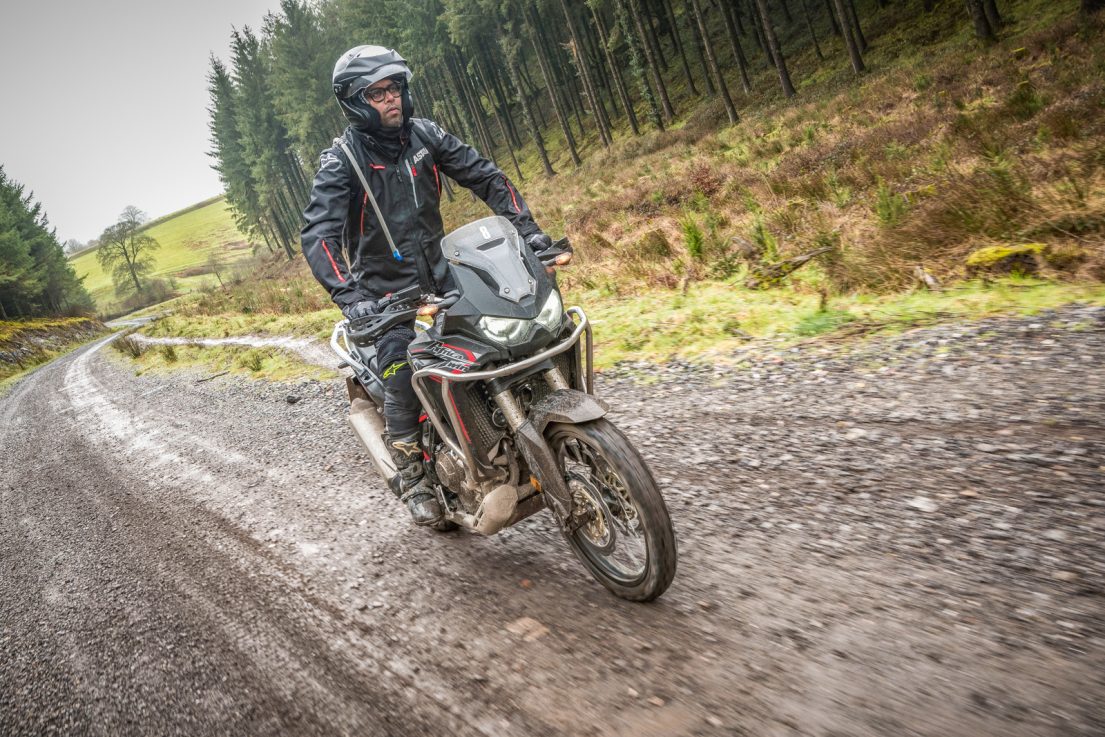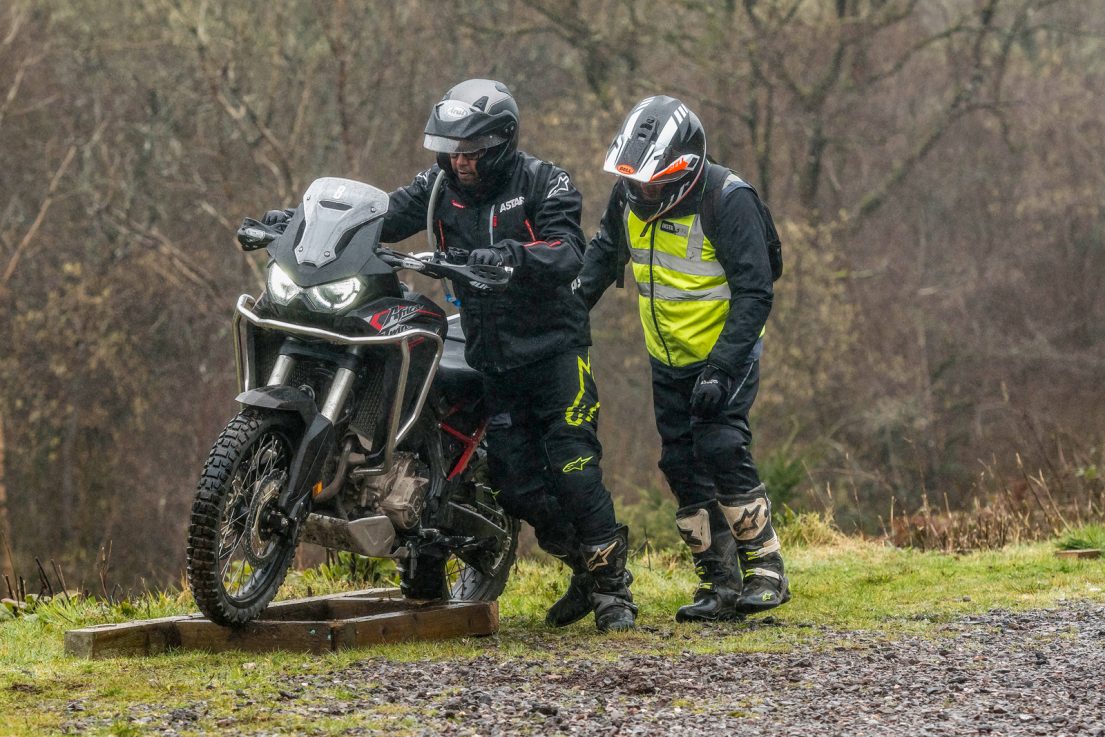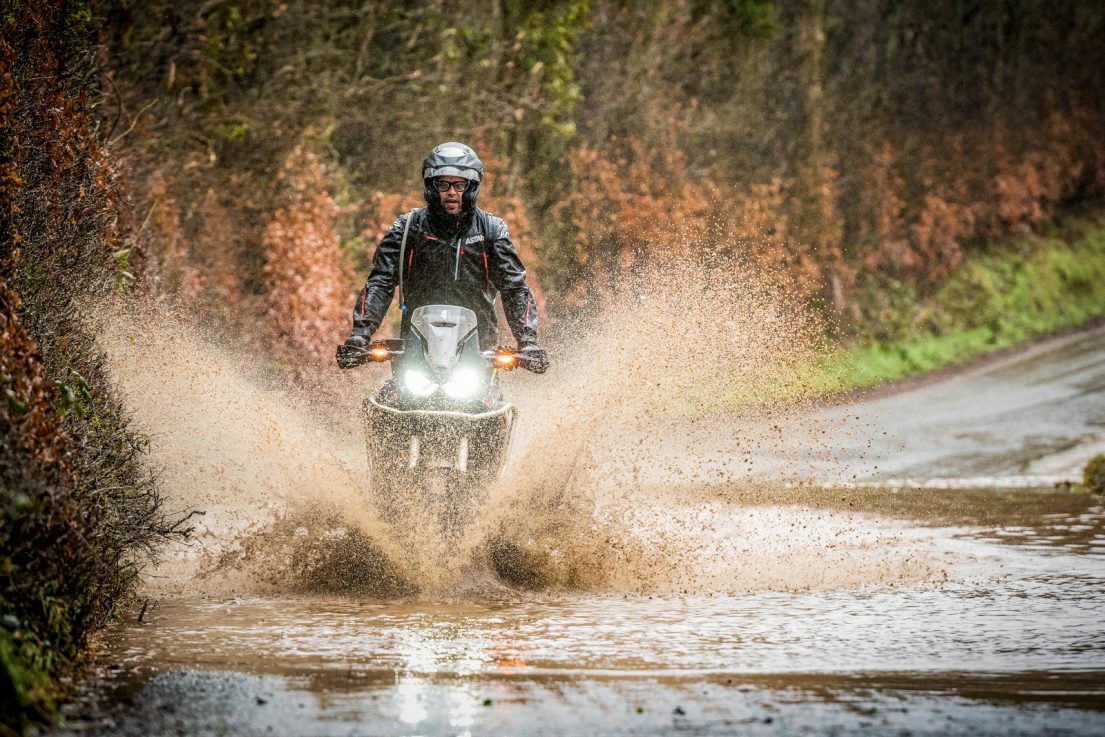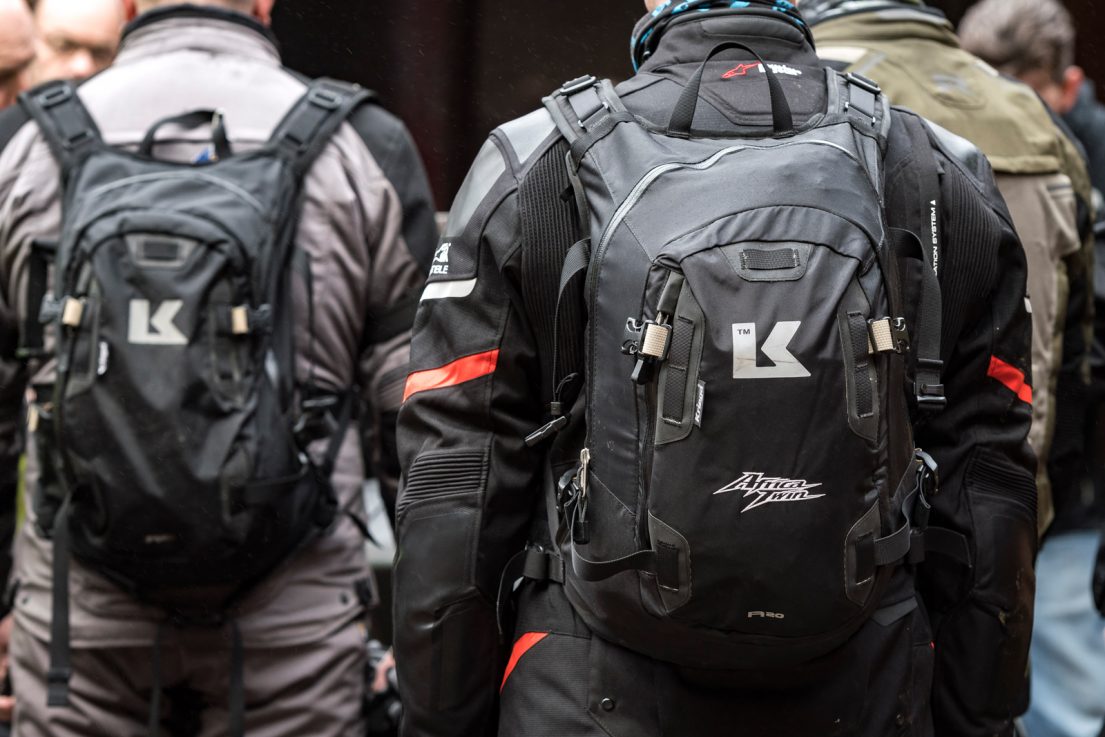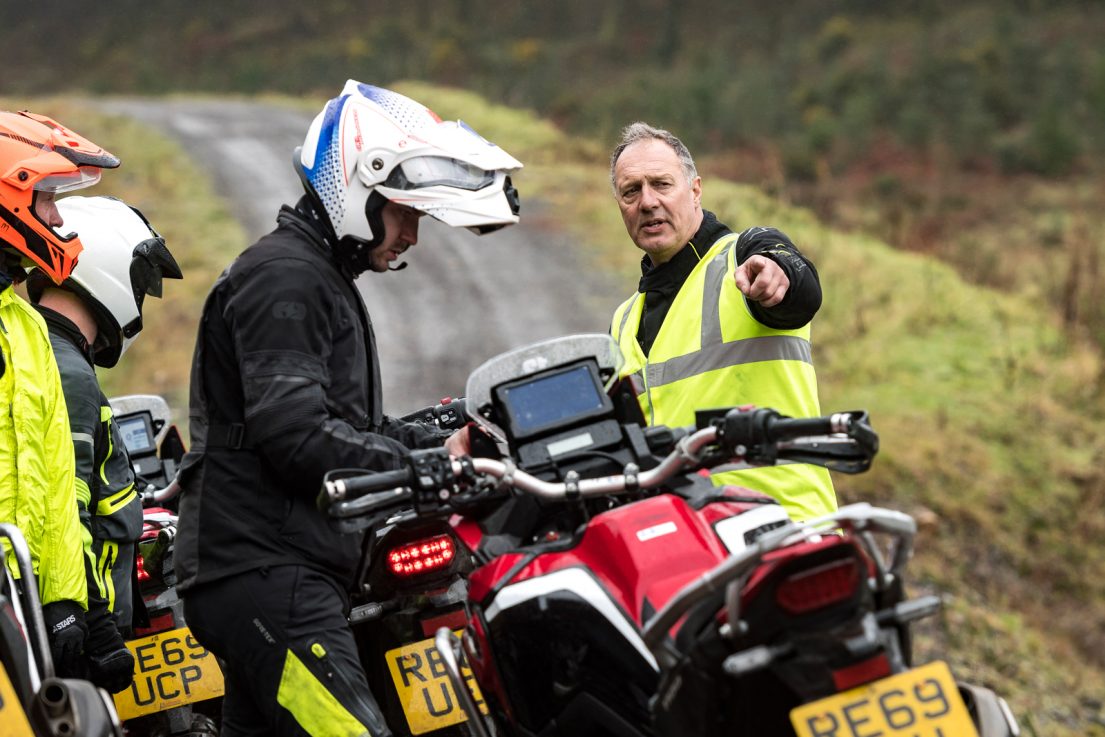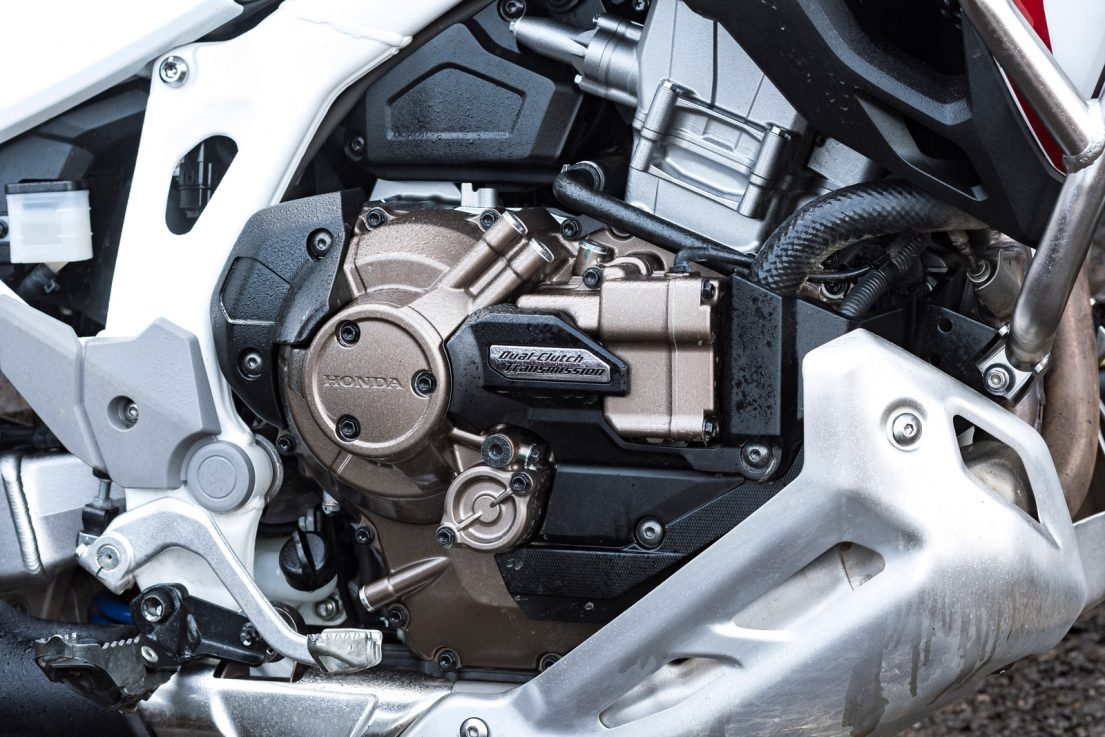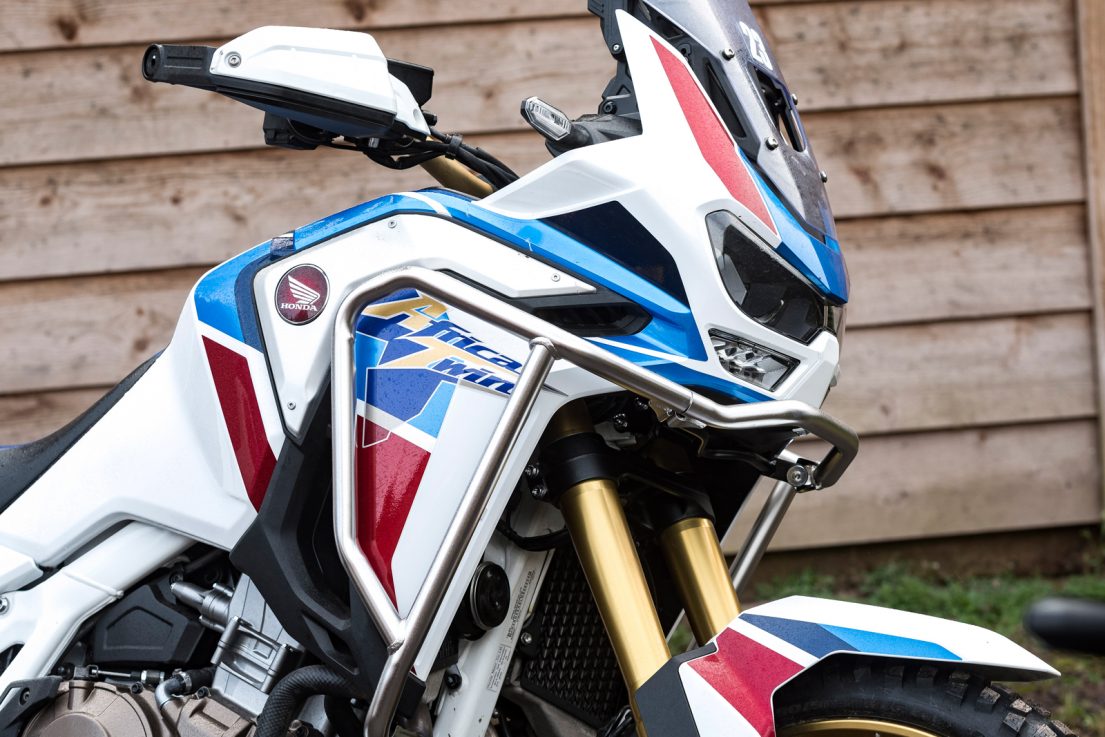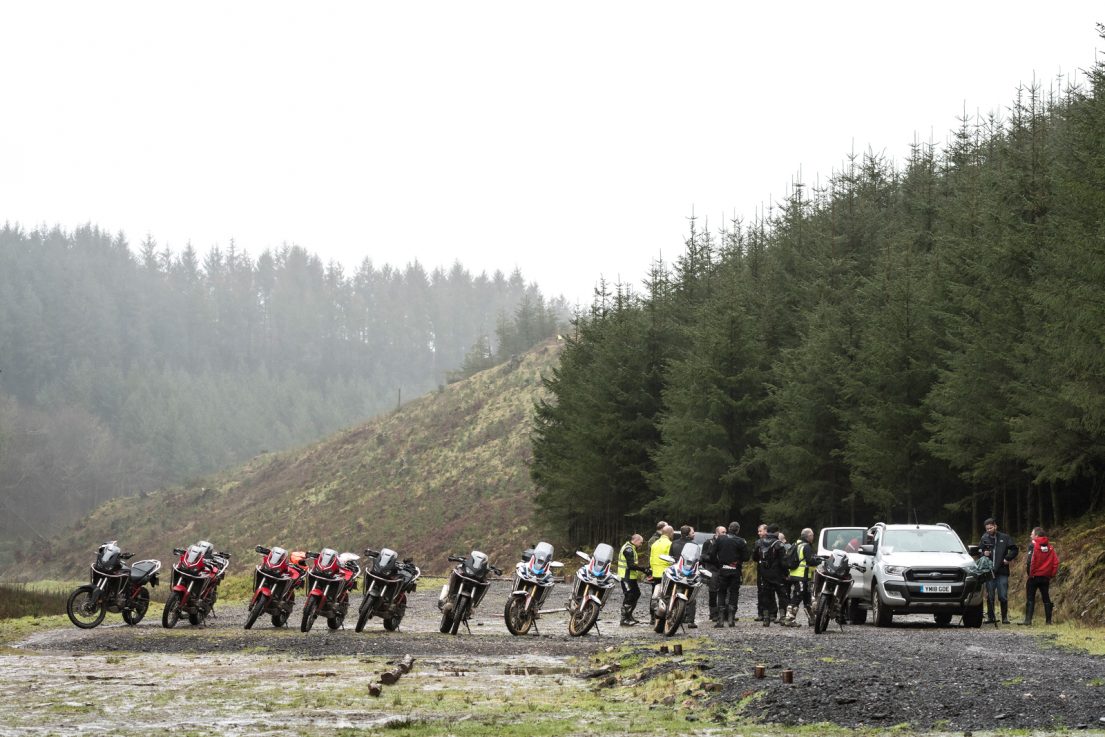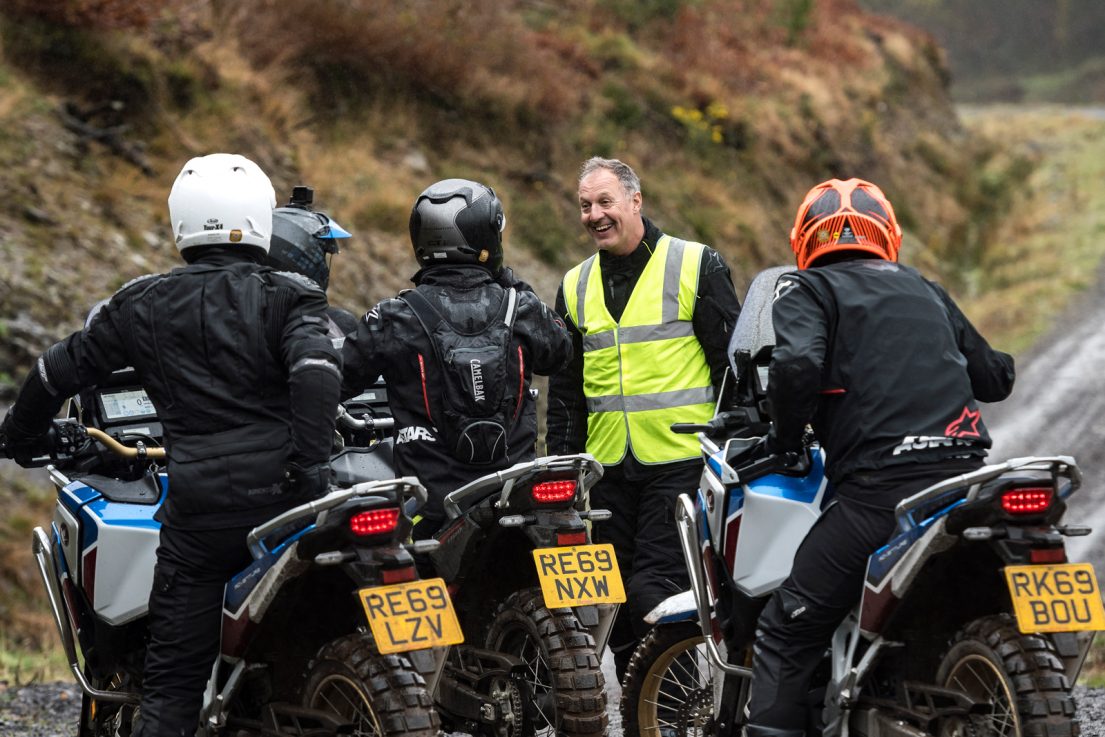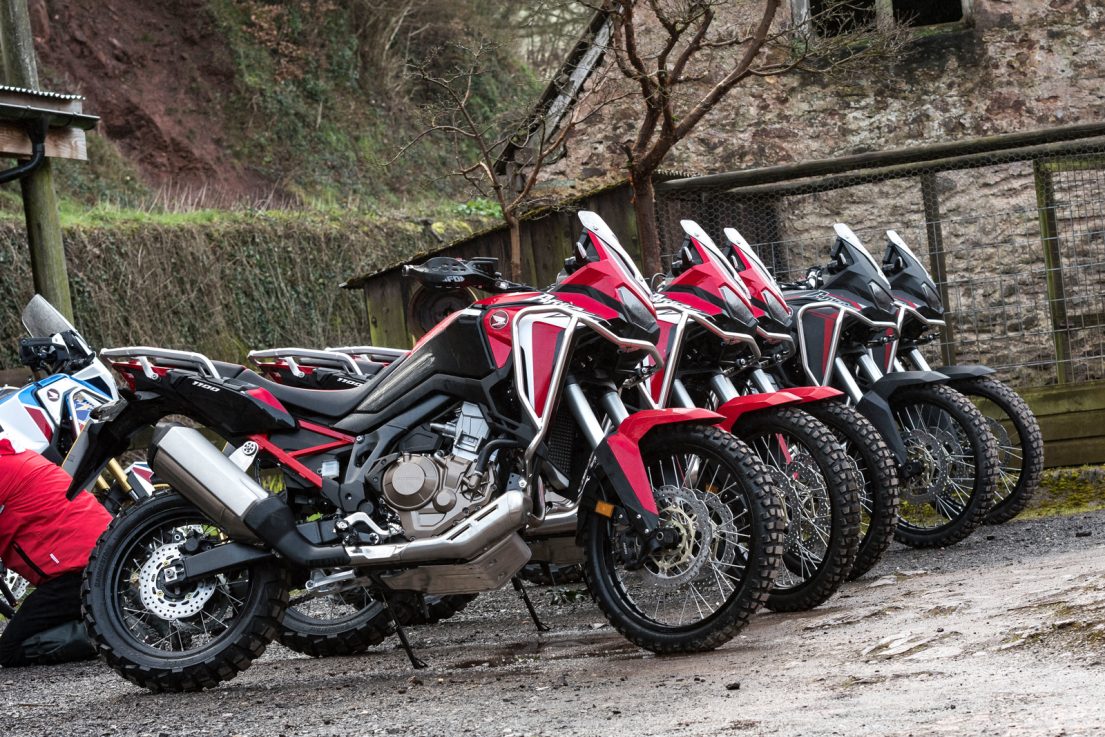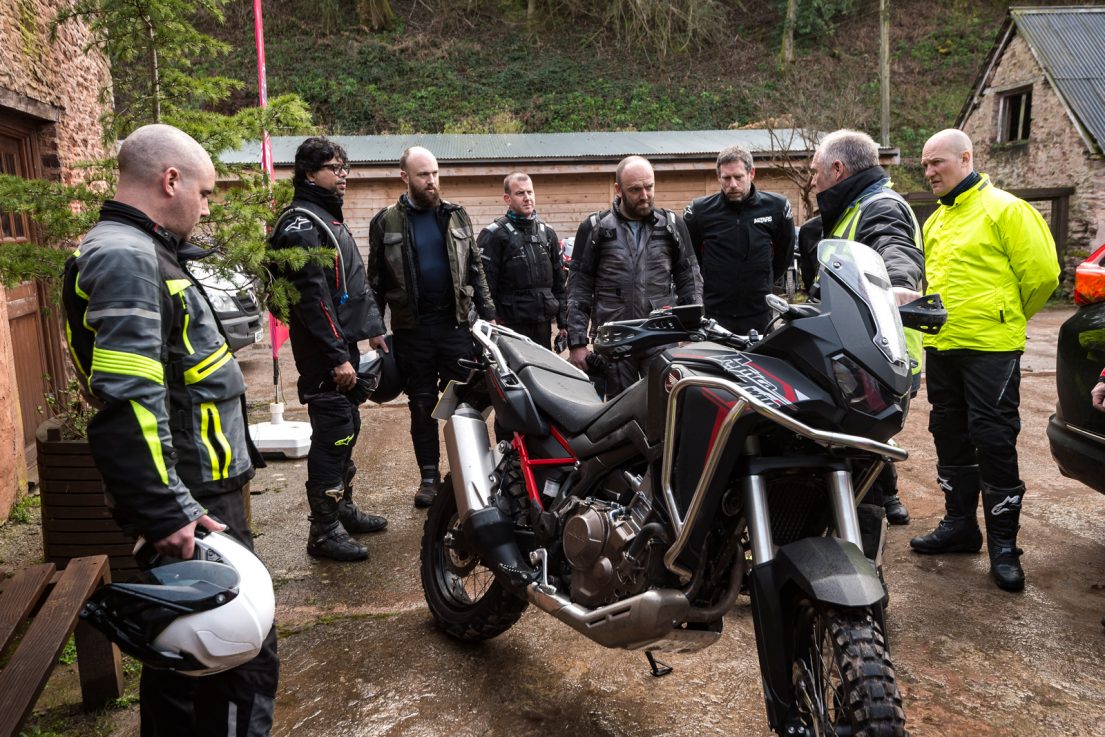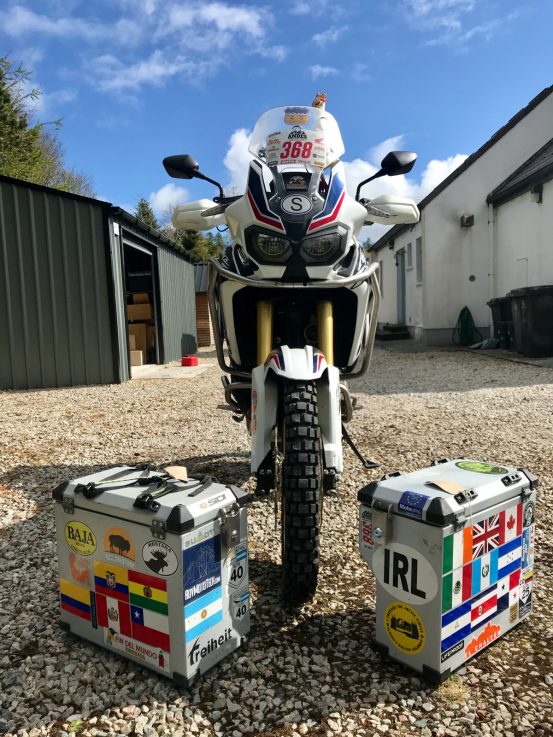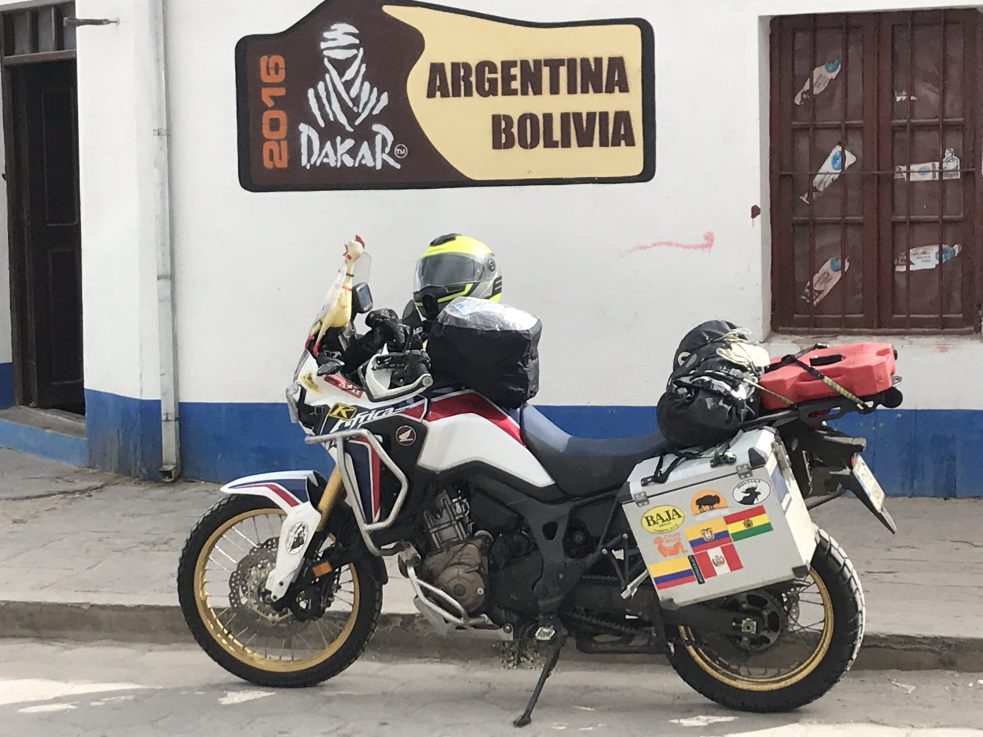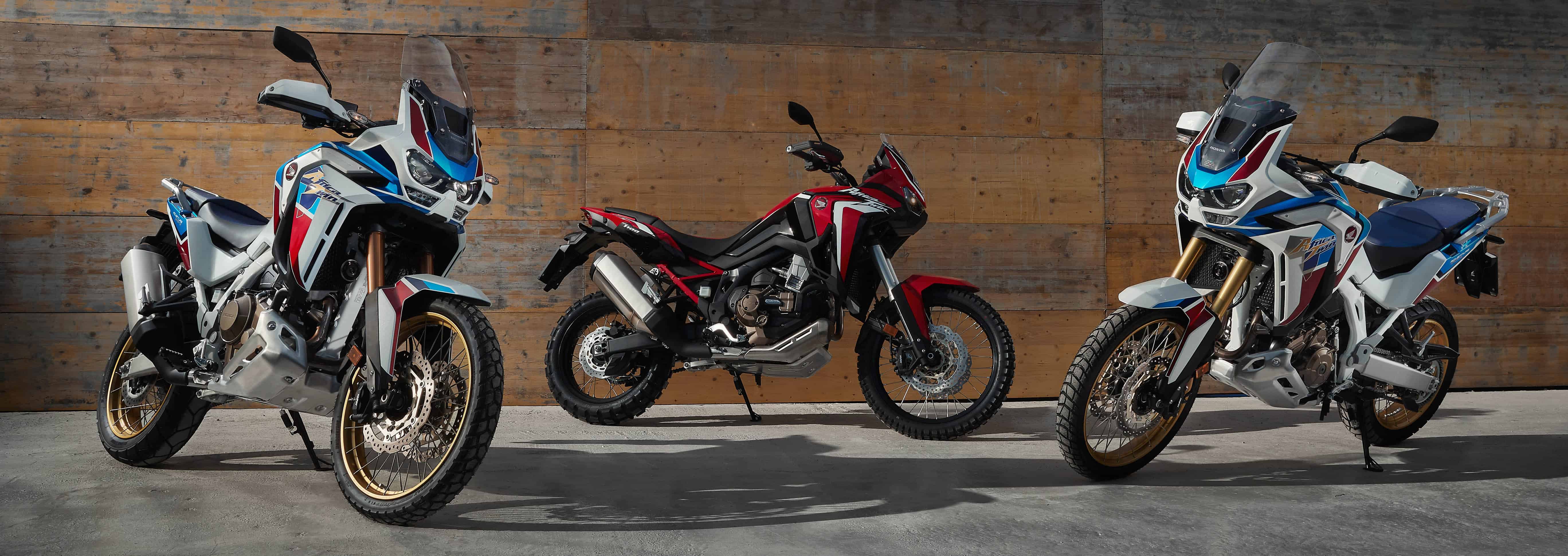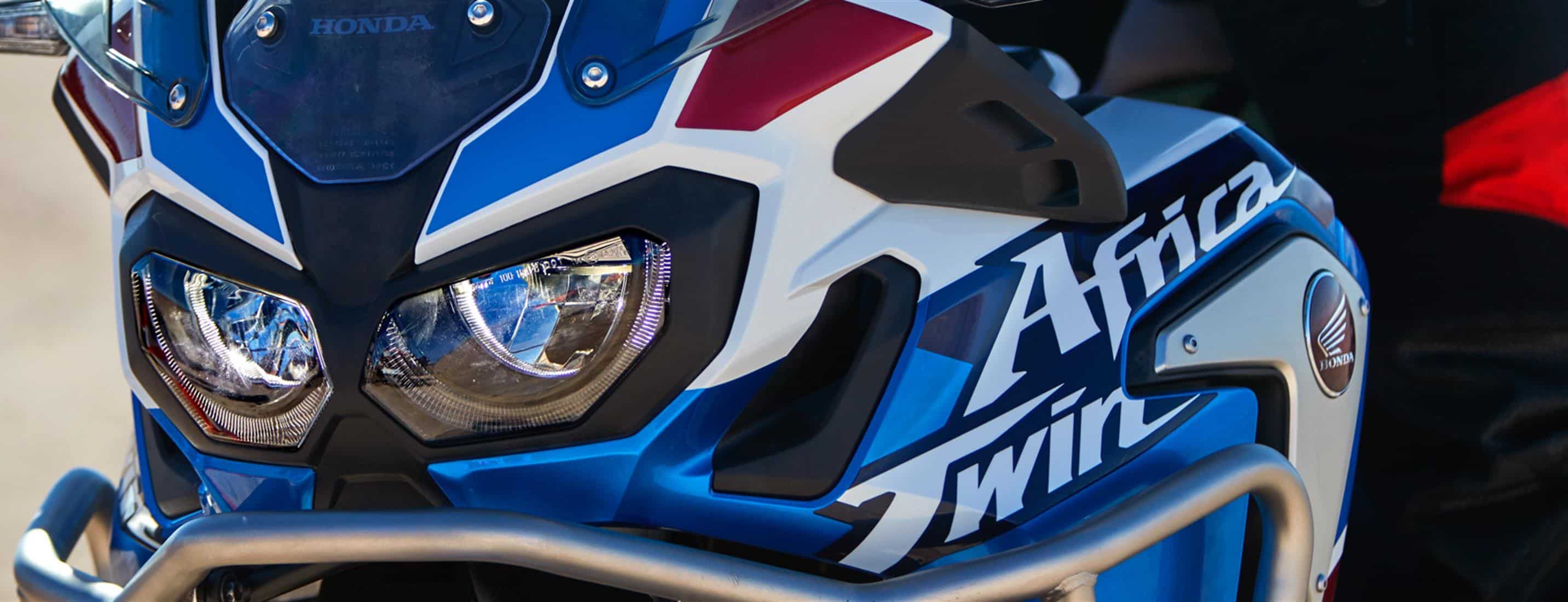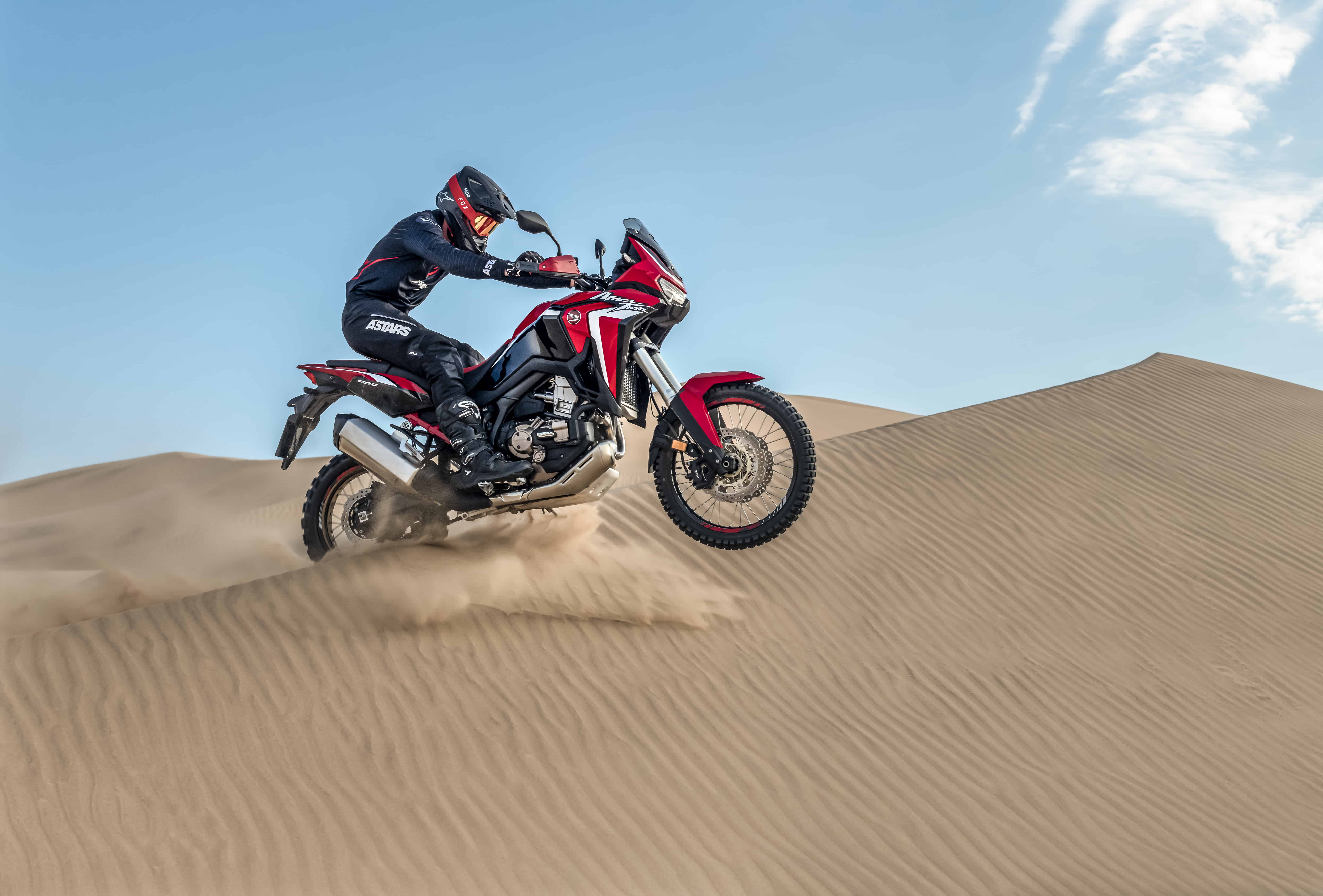When the current variant of the Africa Twin was launched in 2016, I was lucky enough to briefly ride the bike in Africa, Madagascar to be precise – a real test in war-like conditions. Honda had kindly loaned Touratech both its Standard and DCT models for the ‘United People of Adventure’ project. The Standard bike was ridden by a mate from Iceland, who’s a bit of self-proclaimed off-road guru and the DCT one was ridden by another mate, who’s a below the knee amputee – and a bloody competent road and off-road rider. The Africa Twin boys loved the bikes. The combination of strong performance and supermodel looks – I knew Honda was going to take a big slice of the adv bike sales!
Fast-forward four years, Honda invited RUST to a UK media event to test the 2020 CRF1100L Africa Twin, at Honda’s Adventure Centre run by the legendary Dave Thorpe in Devon. The plan was to ride the bike from home to Devon and then spend a day riding the different Africa Twin models at the centre. Before I knew it, there was brand spanking new Adventure Sports model in Black, with panniers and all, in my garage – Hurrah!
Commuting
Commuting into Central London on a big adventure bike doesn’t sound fun. The constant stop-start, filtering between cars, navigating narrow streets, constant gear changes etc can be a pain but on the Africa Twin it was hoot. For starters, the bike hides its weight beautifully (a bit of recurring theme in this article), has a special ‘Urban’ mode for town riding – nice, manageable power delivery – and auto cancelling indicators which is so tangibly practical that each turn puts a wee smile on your face. The cornering lights in the dark alleys of Brixton are a Brucie bonus as it illuminates all the stuff you want to avoid riding over – from potholes to cartons of rotten vegetables and meat!
We want our bikes to do everything these days – commuting, adventuring, off-roading etc – and the Africa Twin truly delivers as a commuter with a grand presence that negates any busy traffic bullying combined with stealth-like agility to get you out of hairy Grand Theft Auto moments.
Touring
Commuting’s a bit of necessity but touring is where the fun begins. The excitement of packing the bike for a few days, weeks or even months on the road is pure bliss. In this instance it was a 500-mile round trip to Devon and back. My loaner came with all the luggage trimmings – top box and two pretty damn sturdy frameless panniers. Not the metal variety but these could soak up a spill or two on the road with ease. I’m not usually a fan of OEM panniers but these I liked – they took seconds to mount and dismount, were aesthetically pleasing and with a whopping 128 litres of storage boy could they fit the kitchen sink… and a bit more.
The Adventure Sports model comes with a 24.8L tank, larger handguards, heated grips, 12V ACC socket, Tubeless tyres, cruise control and a five-stage high screen among other creature comforts. The bike offers everything you need for long distance travelling (as evidenced by the Ian Surgeon’s experience – see below). It’s comfortable, has ample luggage capacity, plenty of power with 1084cc under the hood (giving 75kW peak power and 105Nm peak torque), a 280 mile fuel range, plus Apple car play to access Google Maps, Music etc on the 6.5inch touch screen TFT display. It’s the complete package and touring is a pleasure on the Africa Twin – a big fat yes from me.
Off-road
Touring’s fun but off-roading gets the adrenaline pumping. While Madagascar was the definition of gnarly (read the RUST special issue on this called – imaginatively – ‘Madagascar’) Devon wasn’t a doddle either. Between the two, the bike’s been tested on deep sand, snot-like clay, water crossings, broken bridges, steep loose climbs and descents, ruts, torrential rain, bogs and gravel – a variety of terrain to test any bike on the planet to it’s hilt.
For the off-road sections both in Madagascar and in Devon, it was the standard, i.e. non-Adventure Sports or DCT model, in play. This is where the bike truly shines. Big bikes off-road can be intimidating – not the Africa Twin. The bike feels light (Honda has shaved 5kg on the new model), is flickable, is agile and overall confidence inspiring from the word go. Not sure if it’s all the clever jiggery-pokery of the electronics (and there’s plenty on offer), the weight distribution, a little bit of tuition from Dave Thorpe, the accessible seat height, or a combination of all four, but it’s great to throw the bike around off-road. I didn’t indulge so much in Devon, but Madagascar was off-road on steroids. Let’s put it this way, if you’re an off-road novice like me, you’ll love the Africa Twin off-road and if you’re an off-road pro like JB, you’ll batter the living daylights out of the bike – in both cases beaming from ear to ear.
DCT
Here’s a stat for you – DCT accounts for 50% of all Africa Twin sales globally. Not sure about you but it was certainly a bit of a revelation for me. Now I’m not the target market for the DCT – I like my standard geared bikes – a bit old school like that. To start with, it’s completely unnatural – no blimmin clutch, no gear lever… not right. It takes a while but you get used to it, slowly but surely. For times where you don’t want the bike to ‘ride’ for you, there’s a manual mode and the +/- gear lever on the switch console lends that familiar feeling. There’s obviously way more to the DCT than the prose above but the truth is, I didn’t spend enough time on the DCT and it’d be unfair to give an opinion on it. In the 30 odd minutes of me on the DCT, these things stuck out so I’m sharing them with you. What I will say is that the DCT model is a blessing off-road – no shifting gears or feathering the clutch – just twist the throttle and enjoy keeping the bike upright. More to come on this….
Honda Adventure Centre
There’s a plethora of off-road schools/adventure centres for big adventure bikes in the UK and I’ve been to none. This was of course before my time with Dave Thorpe at the Honda Adventure Centre in North Devon. In all my years of riding, this was my first-ever formal motorcycling learning experience and it was great fun. I’ve been in the Education and Training sector for over 20 odd years now and I can tell a good school from an average one. In this case it was the former.
Led by Dave Thorpe and his team of extremely knowledgeable, patient and competent trainers – the highlight for me was their temperament. Their calm, confident demeanour was as confidence inspiring as the bikes themselves. They deploy a tiered delivery model of both synchronous and asynchronous coaching and gradually turn up the dial on the technical sections. Exercises included are slow speed manoeuvres, slaloms, jumping mini logs, tight turns, water crossings, uphill and downhill riding etc. The centre’s got access to a few hundred acres of a wide variety of terrain – plenty to keep you occupied and challenged for any of their weekend courses or adventure days. Also, if you don’t want to get your kit muddy and wet, there’s kit for rent – helmets, boots, gloves, jacket, trousers etc.
Conclusion
Over the years, I’ve had many adventures bikes from the BMW R 1200 GS to the KTM 1190 Adventure R to a Triumph Tiger, etc and of all these bikes the Africa Twin is the least intimidating adventure bike and is plenty of fun, too. The biggest differentiator for the Africa Twin is its electronics – it truly is an intelligent bike and you can top and tail it to match your riding style for a variety of terrains. And again – it’s got the power of a big bike but feels light as trail bike off-road. Does it do what it says on the tin? Bloody hell it does! Don’t believe me if you want to, but you certainly can’t ignore Ian Sugeon’s words (see below) and his confidence in the machine given a six-month 44,000km adventure across the Americas.
Overlanding – the ultimate test?
My wee 500 miles review is a drop in the ocean compared to Ian Surgeon’s 44,000km ride from Alaska to Argentina in 2017. I too was on the same adventure (but separately) and met Ian in Panama for the Darien Gap crossing – not by bike but by boat. While his experience is from the 2016 model, it’ll give you a flavour of what’s it like to spend six months, day in day out with an Africa Twin.
Q: Where and how long was your trip?
A: Alaska to Ushuaia (and back up to Santiago), more or less concurrent with your trip, June-Dec 2017.
Q: Why the Africa Twin? Were there other bikes in consideration?
A: I previously had a Ducati Multistrada GTS. While this was a tremendous bike, I considered it too complex and not off-road capable enough for the planned trip. Also, I had developed arthritis in my left thumb, which made extended journeys painful, especially on twisty/rough roads with lots of clutch-work, so this is why I chose the DCT version of the AT. Other reasons to choose the Africa Twin: Honda reliability, Honda dealer network/spares.
Q: Pros of the bike?
A: As above for dealer network. Bike quite comfortable. Very reliable. Power and handling adequate on tarmac. No mechanical issues at all apart from those caused by my accident.
Q: Cons of the bike?
A: Bike too heavy. Difficult to control in rough loose conditions. Difficult to pick up when toppled. Bike too new! – DCT very uncommon almost everywhere at this time. Even the standard Africa Twin was rare outside North America. Thus parts, even brake shoes, were difficult to come by, despite being a Honda. Also, Euro Hondas are not the same animal at all as North American ones – again different parts.
Q: What mods did you do on the AT to get it trip ready?
A: Crash bars/engine bars. Rear seat replaced with flat carrier. Rotopax mount on rear carrier plate. Excellent tough Bumot panniers. Radiator gravel guards.
Q: Any breakdowns/ accidents? What? when? where? Bike alright? you alright?
A: I bought the bike only a short time before the trip, and had only covered 1000km (first service) before setting off – all on tarmac. I had never ridden off-road, or an automatic, beforehand. On the Dalton highway on my third day, on the North Slope approaching Deadhorse, I ran into deep gravel at about 80km/h and began to fishtail. I just didn’t know what to do to control it – lack of skill and no clutch, and I fell off. I was OK – a few days of painful hobbling and a lost toenail, but the bike rolled down a 30 foot embankment onto the tundra below, and suffered damage to many of the sticky out bits and fairings. Wouldn’t start either, but that was a problem with the DCT thinking it was in gear I think. Eventually got back to Coldfoot (cost, $1000 on a flatbed trailer, and then managed to hitch a free ride on another flatbed to Fairbanks, where repairs to the bike and recuperation for me occurred). Part of the repairs included replacing the combi unit. Unfortunately the USA combi is completely different to the Euro combi, though it looks the same and has the same connectors – the electronics is not the same. So for all the rest of the trip, until I got back to Ireland and got a Euro combi, I didn’t know what gear I was in, what engine mode I was in, whether I was in sport or not, what the traction control was, etc etc etc! I eventually figured out how to change into sport mode from auto, and then I could do manual up and downshifts, which helped a lot in overtaking trucks. However, mechanically, the bike never missed a beat.

